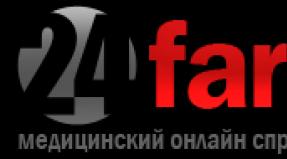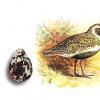Note-taking methods: how to make a summary of history? How to write history notes? Lecture notes on history
Ancient Russia
Russia's struggle against external aggression in the 13th–14th centuries
The emergence and development of the Moscow Principality in the fourteenth and fifteenth centuries
East Slavs.
Culture of Ancient Russia
Formation of Kievan Rus The role of the Varangians in this process The socio-political structure of Kievan Rus.
The collapse of the Kievan state. The main economic, political and cultural centers of medieval Russia
Socio-economic and political structure of the unified Russian state (the second half of the 15th - the first third of the 16th century
History of the Russian Federation
August (1991) coup. Russia on the way to reform
Perestroika from an attempt to modernize the system to a change in the model of social development.
Russia in the 90s – the beginning of the XXI century (Modern Russia)
History of the USSR
Foreign policy of the USSR In the 20s.
Foreign policy of the USSR in 1965–1985
Foreign policy of the USSR in the 30s.
The foreign policy of the USSR on the eve and during the Second World War
The foreign policy of Soviet Russia in October 1917–1920
Russian Civil War
Industrialization of the USSR
Collectivization
Culture of the USSR in 20-30s
NEP is a historical necessity. Essence. Meaning
The initial period of the Great Patriotic War
Formation of the Soviet Union. Description of the USSR as a multinational state.
Socio-political life in the USSR in the 30s. Formation and essence of the Stalinist regime
Socio-political transformations in the USSR 1953-1964. Khrushchev thaw.
The victorious end of the Great Patriotic War (1944–1945). Military operations 1944
Politics of War Communism in Soviet Russia
Russia from February to October 1917 Bolshevik takeover
USSR in interstate relations (1945–1965)
USSR in the post-war period. Strengthening the totalitarian-bureaucratic system
Stalingrad and Kursk battle. A radical turn in the Great Patriotic War.
February Revolution. Socio-political situation in Russia after the fall of tsarism
The formation of the Bolshevik regime and the beginning of the civil war in Russia (October 1917 - May 1918).
The era of developed socialism. The growth of stagnation in the internal life of the USSR.
Russia in the XIX - XX centuries
Foreign policy of Russia at the turn of the XIX - XX centuries. Russo-Japanese War
Socio-political life of Russia at the turn of the XIX - XX centuries, the creation of the RSDLP and the party of socialist revolutionaries. Zemstvo-liberal movement
Revolution 1905–1907 Causes. Driving Forces and the Course of the Revolution. Attempt to establish a parliamentary monarchy
Russia in the First World War. Growing political crisis in the country
Socio-economic development of Russia in the late XIX - early XX centuries. (1895–1914).
Third June Monarchy 1907 Stolypin reforms
Russia in the 19th century
Russia's foreign policy in the second half of the 19th century
Decembrist movement ideology and organization. Decembrist uprising and its historical significance.
Crimean War. Reasons for the defeat of Russia
Culture of Russia in the first half of the 19th century
The international position of Russia at the beginning of the XIX century. Her participation in the anti-Napoleonic coalitions of 1805–1807 Patriotic War of 1812
Social movement in Russia in the 30-50s. 19th century The theory of official nationality. Westernizers and Slavophiles. Revolutionary Democrats
Opposition movement of the 60–80s. populism and bourgeois liberalism
Prerequisites for the fall of serfdom. Revolutionary situation in 1859–1861 The abolition of serfdom in Russia
Russian perestroika of the 60s–70s 19th century
Socio-economic development of Russia in the 60–90s. 19th century The specifics of the formation of capitalist relations
Socio-economic development of Russia in the first half of the XIX century. Crisis of the feudal system of economy
Russia in the XVII-XVIII centuries
Foreign policy of Russia in the XVIII century. In the West, the Polish question and partitions of Poland Seven Years' War Russo-Swedish Wars
Foreign policy of Russia in the XVIII century. in the East, the emergence of the eastern question of war with Turkey began the annexation of the Caucasus.
Foreign policy of Russia under Peter I. Northern War
Civil warriors in Russia in the 17th–18th centuries. (Popular movements under the leadership of S. Razin, K. Bulavin, E. Pugachev) General and special
Culture of Russia in the 18th century
Reforms of Peter Ideas. Main content. Progress and results
Russia in 1725–1762 An attempt to establish a constitutional monarchy in 1730. Palace coups. The main directions of domestic policy
Russia under Catherine II. enlightened absolutism. The laid commission of 1767. Strengthening the positions of the nobility. New trends in the development of industry and trade
Russia in the fourteenth and sixteenth centuries
Domestic and foreign policy of Russia in the 30s - 80s. 16th century Formation of a despotic monarchy under Ivan the Terrible
Serfdom in Russia causes and time of occurrence. The main stages of its legal registration
Culture of Russia in the 17th century
The annexation and development of Siberia at the end of the 16th - 17th centuries
The development of culture in the fourteenth and sixteenth centuries
Troubles in Russia at the end of the 16th - beginning of the 17th centuries Causes. Main stages and results.
Economic and political development of Russia in the XVII century. New trends in the economy. Estate-representative monarchy and the strengthening of absolutism
The price of victory in the Great Patriotic War
Purpose: using historical material to find out at what cost the victory in the Great Patriotic War was achieved.
- To promote the upbringing of patriotism, pride in one's people on the example of the heroism and courage of the Soviet people on the example of the Great Patriotic War; respect for the memory of ancestors; development of a comprehensively developed personality, the formation of the ability to accept events from the past, analyzing them through historical tests.
- Develop mental operations: analysis, comparison, synthesis, generalization.
- Explore and compare historical events, revealing causal relationships.
- To promote the development of attention, memory, speech, logical thinking.
Type of lesson: discovery of new knowledge.

Lesson form: educational journey.
Purpose: to acquaint students with the period of feudal fragmentation in Russia on the example of the history of the Vladimir-Suzdal principality. Show that fragmentation was an obligatory stage in the history of feudal states.
Tasks:
personal - to promote respect for the history of their homeland,
meta-subject - to develop the ability to work with a map, historical sources, systematize data in a table,
subject - to determine the features of the development of the Vladimir-Suzdal principality.
Equipment: media presentation "Vladimir-Suzdal Principality", worksheets with tasks, historical source "N.I. Kostomarov's assessment of A. Bogolyubsky's activities", projector, PC for teacher with Internet access, screen.
This material corresponds to the UMK edited by A.V. Torkunov.


The abstract contains the following structure:
- introductory part (fixing the previous topic - test)
- the main part (studying new material, work in groups)
-conclusion (reflection, grading, homework)
This work is accompanied by a multimedia presentation.
The development complies with the requirements of the Federal State Educational Standard.


Target audience: for grade 7
Purpose: formation of understanding of the political situation in the country and the world on the example of Russian-Japanese relations at the present stage, increasing interest in the history of the native land;
- personal - education of patriotism, pride in one's own land, a sense of belonging to the fate of Russia;
- meta-subject - work with the skills of cognitive, educational and research activities, with the ability to independently search for methods for solving practical problems, with the ability to work with documents;
- subject - the study of the history of the post-war order of the world in the Far East, the study of documents of conferences on the post-war order of the world in the Far East.


Target audience: for grade 10
Foreign policy of the USSR in the second half of the 1930s.
Form of the lesson: lecture.
Purpose: using historical material to find out the reasons for the failure of the collective security policy in Europe, which led to the outbreak of World War II.
Tasks: 1. To promote the development of a respectful attitude to the history of one's country; development of a comprehensively developed personality, the formation of the ability to accept events from the past, analyzing them through historical tests.
Type of lesson: a lesson in discovering new knowledge, acquiring new skills and abilities.


Target audience: for grade 11
Form of the lesson: lesson-journey.
Target:
acquaintance with the work of Orthodox architecture, with the culture of Byzantium, which influenced the culture of Russia through baptism and Orthodoxy.
Tasks:
Personal- familiarization with the culture of the peoples of the country, fostering a sense of respect and admiration for the culture of peoples in the dialogue of cultures;
Metasubject- formation and development of the ability to understand works of art as a sign, to read this sign;
subject- study of the features of the cross-domed type of the temple, mosaics as an art form; the study of the culture of the state, which influenced the formation of culture, religion and statehood of the Russian state.


Target audience: for grade 6
in Athenian schools and gymnasiums
Lesson - educational journey
The form of the lesson: an educational journey with elements of a role-playing game.
Purpose: using historical material to find out the features of education in Athens.
Tasks:
1. Contribute to the development of a respectful attitude towards education; development of a comprehensively developed personality, the formation of the ability to accept events from the past, analyzing them through historical tests.
2. Develop mental operations: analysis, comparison, synthesis, generalization.
3. Explore and compare historical events, revealing causal relationships.
4. Promote the development of attention, memory, speech, logical thinking.
Type of lesson: discovery of new knowledge.
Equipment and teaching aids: Presentation “In Athens schools and gymnasiums”, historical text: “Complaint of an irritated mother to a teacher about a truant son from a cheerful play by an ancient author”, Greek alphabet and numbers, projector, PC for the teacher, screen.


Target audience: for grade 5
"The place and role of Russia in international trade in the 9th - 12th centuries"
Lesson - systematization and generalization of knowledge.
Form of the lesson: systematization and generalization of knowledge.
Goals:
Content: identifying the level of knowledge of students
The manual contains basic notes on the history of Russia from ancient times to the present day. Compiled on the basis of major topics, they allow children to be taught to see the historical process in all its causal integrity, to increase the effectiveness of learning.
It is intended for teachers and students of general educational institutions, teachers of history and methodology of humanitarian universities, students studying historical disciplines.
Methodology for working with reference notes.
The methodology for working with the basic abstract includes five stages. Depending on the preparedness of the students, the duration of the study of history, the availability of skills in working with such a didactic tool, certain stages can be repeated twice, some can be excluded altogether, etc.
First stage. The reference abstract is displayed through a graphic projector (codoscope) of the "Lektor-2000" type. The teacher sequentially, in the form of a story, deciphers the reference signals. Students, without taking any notes, listen carefully to him.
Second phase. Reference signals from the screen image are transferred by students to notebooks. In this case, it is recommended to take into account the color scheme of the designations.
Having a reference summary in a notebook, each student now independently deciphers it. The teacher is ready at any time to help those who have difficulty in this type of work.
Third stage. Individual students, preferably at will, go one by one to the screen and, using the image on it, decipher, pronounce out loud the information of the abstract as a whole or its blocks.
CONTENT.
Reference notes in the classroom.
Supporting thematic abstracts.
OK-1. Origin of the Slavs.
OK-2. East Slavic tribes in the VIII-IX centuries.
OK-3. East Slavic tribes in the VIII-IX centuries. (continuation).
OK-4. Religion of the Eastern Slavs.
OK-5. The emergence of the state among the Eastern Slavs.
OK-6. The first Russian princes.
OK-7. The reign of Svyatoslav.
OK-8. The reign of Vladimir I.
OK-9. The reign of Yaroslav the Wise.
OK-10. Horde dominion in Russia. Mid 13th century
OK-11. Creation of a single centralized Moscow state.
OK-12. Creation of a single centralized Moscow state (continued).
OK-13. Literature. Historical thought of the XI\/-XV centuries.
OK-14. Life of Russian people of the XIV-XV centuries.
OK-15. The reforms of the Chosen One are glad. 16th century
OK-16. The reforms of the Chosen One are glad. 16th century (continuation).
OK-17. Russia by the middle of the XVI century.
OK-18. The end of the dynasty of I. Kalita.
OK-19. Enlightenment in the 16th century
OK-20. Literature. Historical and political thought. 16th century
OK-21. Boyar Duma in the 17th century. (before Peter I).
OK-22. Zemsky Sobors in the first half of the 17th century.
OK-23. Central and local government under the first Romanovs.
OK-24. Cathedral Code of 1649
OK-25. Court and army in the 17th century.
OK-26. Agriculture in the 17th century
OK-27. Industry in the 17th century
OK-28. Estates in the 17th century Feudal lords.
OK-29. Estates in the 17th century Peasants and serfs.
OK-30. Estates in the 17th century Posad people.
OK-31. "Salt Riot" of 1648
OK-32. "Copper Riot" of 1662
OK-33. Razinshchina. 1670-1671
OK-34. Board of Fyodor Alekseevich. 17th century
OK-35. Literacy in the 17th century
OK-36. Schools in the 17th century
OK-37. Scientific knowledge in the 17th century.
OK-38. Life in the 17th century
OK-39. Reforms of Peter the Great. Economic development.
OK-40. Reforms of Peter the Great. Estate changes.
OK-41. Reforms of Peter the Great. Public administration.
OK-42. Reform of power under Catherine II.
OK-43. Foreign policy of Russia in the second half of the 18th century.
OK-44. Agriculture in the 18th century
OK-45. Trade in the 18th century
OK-46. Life of Russians in the XVIII century.
OK-47. Revolts in the 18th century
OK-48. Socio-political thought in the XVIII century.
OK-49. Russian Church in the 18th century
OK-50. Science in the 18th century
OK-51. Enlightenment in the 18th century
OK-52. Russia at the beginning of the nineteenth century.
OK-53. Estates at the beginning of the XIX century.
OK-54. secret organizations. 1816-1825
OK-55. "Russian national beginnings". 30s of the XIX century.
OK-56. Military settlements in the 19th century
OK-57. Peasant question under Nicholas I.
OK-58. Education in the first half of the nineteenth century.
OK-59. Science in the first half of the 19th century
OK-60. Russian travelers of the first half of the 19th century.
OK-61. Great reforms of Alexander II. "About Emperor Alexander II".
OK-62. Great reforms of Alexander II. "Liberation of the Peasants".
OK-63. Great reforms of Alexander II. Zemstvo and city self-government.
OK-64. Great reforms of Alexander II. "The court is quick, right and merciful."
OK-65. Great reforms of Alexander II. "In the strength of the army - the strength of Russia."
OK-66. Great reforms of Alexander II. "Financial arrangement".
OK-67. Great reforms of Alexander II. "Education".
OK-68. Great reforms of Alexander II. "Foreign policy".
OK-69. Counter-reforms of Alexander III.
OK-70. Industrial rise in the 90s. nineteenth century
OK-71. Education. Second half of the 19th century
OK-72. Russian science in the second half of the XIX century.
OK-73. Printing and book publishing in the second half of the nineteenth century.
OK-74. First census. 1897
OK-75. Russia at the turn of the XIX-XX centuries.
OK-76. The crisis of domestic and foreign policy at the beginning of the 20th century.
OK-77. The first Russian revolution and the beginning of parliamentarism.
OK-78. Unfinished modernization.
OK-79. Growing national catastrophe.
OK-80. Fall of the Romanov Empire.
OK-81. Difference between ideal and reality. 1917-1922
OK-82. Failed change of point of view on socialism.
OK-83. "Socialism" in one country.
OK-84. Stalin's "revolution" from above.
OK-85. Soviet Union during the Second World War.
OK-86. The Soviet Union during the Second World War (continued).
OK-87. The last years of Stalinism.
OK-88. On the way to liberalization of the system. Time N.S. Khrushchev.
OK-89. From stability to "stagnation".
OK-90. "Perestroika" and the collapse of the Soviet system.
Basic summaries are generalizing (by century).
OK-91. Russian history. 9th century
OK-92. Russian history. 10th century
OK-93. Russian history. 11th century
OK-94. Russian history. 12th century
OK-95. Russian history. 13th century
OK-96. Russian history. 14th century
OK-97. Russian history. 15th century
OK-98. Russian history. 16th century
OK-99. Russian history. 17th century
OK-100. Russian history. 18th century
OK-101. Russian history. 18th century (continuation).
OK-102. Russian history. 19th century
OK-103. Russian history. 19th century (continuation).
OK-104. Russian history. 20th century 1901 - 1917
OK-105. Russian history. 20th century 1917-80s
OK-106. Russian history. 20th century 90s
Supporting notes on primary sources.
OK-107. Baptism of Russia. "The Tale of Bygone Years".
OK-108. "Teachings of Vladimir Monomakh".
OK-109. Klyuchevsky V. O. Classification of officials in the Moscow State. Until the regulation.
OK-110. Klyuchevsky V. O. Classification of officials in the Moscow State. Before the Code (continued).
OK-111. Klyuchevsky V. O. Classification of officials in the Moscow State. Before the Code (continued).
OK-112. Klyuchevsky V. O. The failure of the transformations of Alexander I.
OK-113. Klyuchevsky V. O. The failure of the transformations of Alexander I (continued).
OK-114. Ilyin I. A. The art of building a federation.
OK-115. Ilyin I. A. The art of building a federation (continued).
OK-116. Ilyin I. A. The art of building a federation (continued).
OK-117. Ilyin I. A. The art of building a federation (continued).
I want to make a reservation right away that I did not have and do not have any special methodology for preparing notes. Therefore, this post is just an attempt to summarize some simple and obvious tips for taking notes.
Tip 1. The end must justify the means.
If you decide to write notes, then you should immediately decide for yourself whether you will do this throughout the course of history, only on some of the most difficult and / or little studied part (topic) for you, or simply limit yourself to brief fragmentary notes “on just in case" and "perhaps a ride."
This is relevant, because there are a lot of examples when people incorrectly calculated the time and simply did not have time to do a lot. Or they lost motivation when they began to realize that the amount of work is very large, and writing notes is progressing very slowly. This leads to the following recommendation.
Tip 2. Brevity is the sister of talent.
This means that the information in the abstract should be presented concisely. It would seem that Captain Evidence, but it often turns out that not for everyone. The synopsis is not a rewriting of whole sentences and paragraphs from a textbook, but a conscious work with the text in order to reduce the existing volume to a "squeeze" of the most valuable material. The abstract must contain most important from the names, dates, events mentioned in the paragraph (chapter, section).
How to choose them? There are two ways here.
A) Rely on the indications already available (sometimes in the text, key points may already be highlighted bold font, in italics, color ). You can also rely on the dictionaries of terms, lists of personalities, dates, etc. present at the beginning and end of the textbook (reference book) or their sections. etc.
B) Rely on your own choice. Most likely, the ideal way, as is often the case, is the "golden mean", i.e. a combination of both methods.
Tip 3. Make an economy y - economical, and abstract - ponclear.
Follow the first part of the statement and the call of L.I. Brezhnev is not necessary at all, but it is necessary to make your notes not only compressed in volume, but also meaningful in quality.
I would single out two main ways to achieve this goal.
A) Drawing up a detailed outline plan (i.e. highlighting semantic parts - subparagraphs in the text). With the help of this method, it will be possible to structure even a large text and facilitate its understanding, and hence the memorization of information.
B) Drawing up diagrams (drawings, tables, etc.). Here the main goal is about the same, only the visualization method plays a greater role, allowing both to reduce the amount of writing and not to get confused in cause-and-effect relationships, the logic of actions of historical persons, etc.
Tip 4. Konspekt - did not growcat, but a learning tool.
This means that the abstract should be easy to use. I am increasingly coming to the conclusion that it might be more convenient to use not notebooks for notes - “ledgers”, resembling the complete works of Lenin in their thickness, but ordinary sheets of A4 paper. The fact is that after writing the abstract, you can find some new information and important points that you also want to record in writing. Entries in notebooks are inconvenient here, since it is difficult to calculate the necessary space that should be left for making changes (additions). The downside here is that you need to constantly monitor that all the necessary materials are at hand and nothing is lost.
However, the following tips follow from this.
Advice 5. What we have - we do not store, having lost - we cry.
This means that if you write on separate sheets, then at least get yourself special folders (preferably with files), in which you pack the fruits of your educational activities. This is especially true, for example, of historical works, which should not only be written regularly, but, no less important, rewritten (correcting the consequences of an unsuccessful experience) and then carefully preserved. This is necessary so that before the exam you do not try to buy / download the entire package of possible texts “without SMS and registration”, but calmly re-read your own opuses.
Advice 6
With all due respect to V.S. Chernomyrdin and his catchphrase in the title, but some problems with your texts are best avoided. Therefore, if you still write in a notebook, then be sure:
A) Leave space after the abstract for making clarifications (corrections), additions that may well appear. You should not sculpt words and sentences on top of each other as if you are writing on scarce material. Do not spare the paper and it will be grateful to you!
B) Use paper bookmarks to mark sections, markers and pens to highlight the most significant points in color (but do not overdo it). This will save you a lot of time when searching for the necessary information when iterating and not only.
Subscribe and follow the release of new publications in my Vkontakte community "History of the Unified State Examination and Stepan the Cat"
M.: 2011. - 368 p.
With this publication, we continue the series "Lecture notes. To help the student", which includes the best lecture notes in the disciplines studied in humanitarian universities.
The material is brought into line with the curriculum of the course "History of Russia".
Using this book in preparation for the exam, students will be able to systematize and concretize the knowledge acquired in the process of studying this discipline in the shortest possible time; focus on the basic concepts, their features and characteristics; formulate an approximate structure (plan) of answers to possible examination questions.
This book is not an alternative to textbooks for obtaining fundamental knowledge, but serves as a guide for successfully passing exams.
Format: djvu
The size: 5.1 MB
Download: drive.google
Format: pdf
The size: 16.6 MB
Download: drive.google
CONTENT
Question 1. Subject, method of the course "History of Russia" 3
Question 2. Driving forces of history. The influence of ideology on historical science 4
Question 3. Settlement of ancient Russian lands 6
Question 4. Formation of Kievan Rus 9
Question 5. The heyday of Kievan Rus. Strengthening the feudal system 12
Question 6. Feudal fragmentation and specific principalities 14
Question 7. Mongol-Tatar invasion of Russia 17
Question 8. Reflection of aggression from the West. Alexander Nevsky 22
Question 9. Golden Horde 24
Question 10. The essence of the Mongol-Tatar yoke 26
Question 11. Centralization of Russian lands, the rise of Moscow ... 29
Question 12. Battle of Kulikovo 1380 31
Question 13. Late yoke. Great feudal war 1533 - 1553 34
Question 14. The liberation of Russia from the Mongol-Tatar yoke. Ivan III 36
Question 15. Reforms of the early Ivan the Terrible 39
Question 16. The struggle of Ivan the Terrible with the boyars. Oprichnina and counter-reforms 43
Question 17. Foreign policy of Ivan the Terrible. Expansion of the territory of Russia 48
Question 18. The crisis of the Rurik dynasty. Boris Godunov 51
Question 19
Question 20. The first stage of the Troubles. The accession of False Dmitry I and his phenomenon 55
Question 21. The second stage of the Troubles. Dual power of Vasily Shuisky and False Dmitry II 58
Question 22. The third stage of the Troubles. National Liberation War 60
Question 23. Russia from 1613 - 1682 (from the Time of Troubles to the accession of Peter I) 64
Question 24 Peasant War 1667 - 1671 66
Question 25. Reunification with Ukraine, development of Siberia and the Far East 68
Question 26
Question 27
Question 28. Northern war. Military activities of Peter 1 76
Question 29
Question 30. The essence of palace coups. Catherine I, Peter II, Anna Ioannovna 83
Question 31. Revival of Russia under Elizabeth I Petrovna in 1741 - 1761 87
Question 32. The reign of Peter III. Accession of Catherine II in 1762 89
Question 33. Domestic policy of Catherine II (1762 - 1796) 91
Question 34 The repressive policy of Catherine II 95
Question 35
Question 36
Question 37
Question 38. All-European war against France and Napoleon 1792 - 1814 Patriotic War of 1812 111
Question 39
Question 40
Question 41
Question 42. Reforms of Alexander II. The abolition of serfdom in Russia 126
Question 43. Russian-Turkish warrior 1877 - 1878 130
Question 44. The reign of Alexander III. Counter-reforms of 1880 - 1890s 133
Question 45. Culture of Russia in the XVIII - XIX centuries 136
Question 46
Question 47
Question 48
Question 49
Question 50
Question 51. Formation of revolutionary parties in Russia 161
Question 52
Question 53. February bourgeois revolution of 1917 168
Question 54. Development of the revolutionary process after the February Revolution in 1917 171
Question 55
Question 56. Proclamation of the RSFSR and the dictatorship of the proletariat in January 1918
Question 57
Question 58
Question 59
Question 60. Civil war in Russia (1917 - 1922) 195
Question 61
Question 62. Struggle for diplomatic recognition of the USSR 207
Question 63
Question 64. Establishment of a totalitarian political regime in the USSR. "The cult of personality" I.V. Stalin 215
Question 65. Industrialization in the USSR. First five-year plans 224
Question 66. Collectivization in the USSR 230
Question 67. The spread of fascism. Beginning of Hitler's intervention in Europe 233
Question 68
Question 69. The beginning of the Great Patriotic War. Plan "Barbarossa", master plan "Ost" 244
Question 70
Question 71
Question 72. A radical change in the course of the war. Battle of Kursk 1943 257
Question 73
Question 74. The final defeat of Germany. Liberation of Europe 261
Question 75. Potsdam Conference. Destruction of Japan. Trial of war criminals 266
Question 76 "Cold War" 268
Question 77. USSR in the period of late Stalinism (1945 - 1953)
Question 78 Rise of N.S. Khrushchev 280
Question 79 Khrushchev. "Thaw" of the early 1960s 284
Question 80
Question 81. The USSR in the era of "developed socialism" (1964 - 1985) 291
Question 82. Growing systemic crisis of totalitarian socialism in the 1970s-1980s
Question 83
Question 84. The foreign policy of the USSR during the years of perestroika 305
Question 85. Sovereignization of Russia (1990 - 1992) 308
Question 86
Question 87: Radical economic reform 317
Question 88
Question 89. Political development of Russia in 1994 - 1999 327
Question 90. Economic development of Russia in 1994 - 1999 333
Question 91. Culture of Russia and the USSR in the XX century 337
Question 92: Russia and the Chechen conflict 341
Question 93. Russia in the XXI century. The first term of the presidency of V.V. Putin (2000 - 2004) 347
Question 94. Russia in the XXI century. (2004 - 2008) The second term of the presidency of V.V. Putin 349
Question 95 Medvedev as President of the Russian Federation (first half of the presidential term 2008-2010) 354



















